The W&A Engineering Landscape Architecture team has decades of experience bringing man-made elements into harmony with the natural environment! On this Earth Day, we’d like to share some of our team’s key practices for maximizing sustainability and environmental stewardship which can be used in any home garden this spring.
As our Director of Landscape Architecture Scott Haines, ASLA, PLA always says, “Gardens bring with them a whole lot of opportunities for sustainability and making good choices for the environment.” While these steps may require a bit more time and creativity in your home gardening, the results are well worth it!
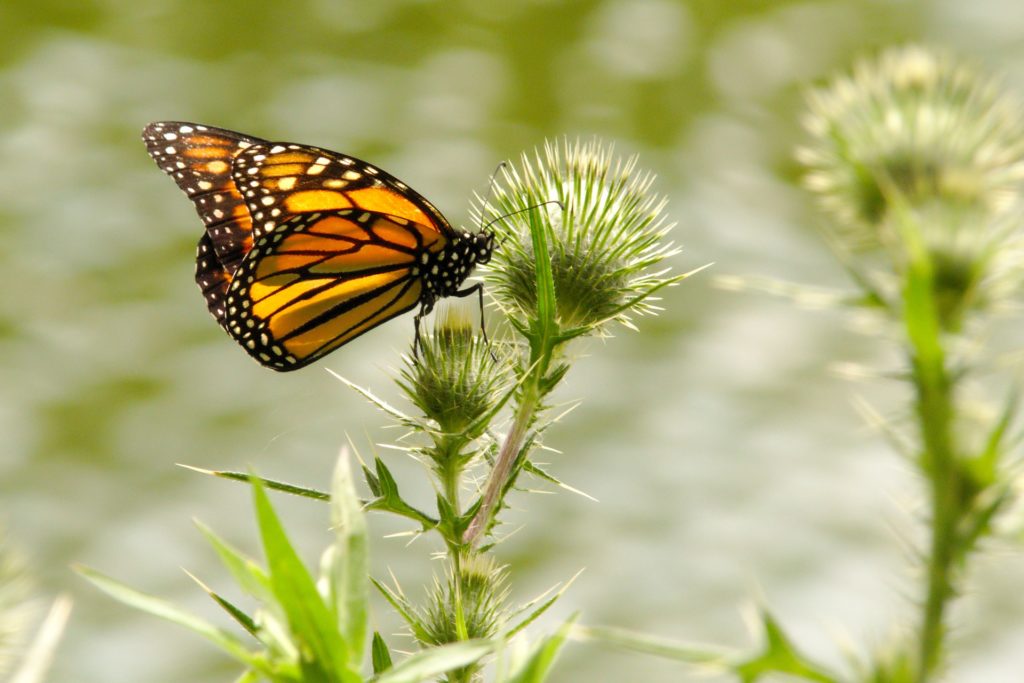
Be Sensitive to Pollinators.
Did you know that the pollinator population of an area is a great indicator of the overall health of an ecosystem? Pollinators are hugely important in environmental stewardship with some crops, including blueberries and cherries, being 90 percent dependent on honey bee pollination. There are numerous ways to be sensitive to the pollinators in and around your landscape when planning and caring for your home garden. For example, planting a variety of flower colors and shapes will help attract different pollinators to your garden. Similarly, choosing plants that flower at different times of the year will provide nectar and pollen sources throughout the growing season. Choosing native plants whenever possible will produce gardens that are better adapted to your soil type, climate, and precipitation, and will encourage visits from local pollinators. If you really want to go the extra mile, incorporate a shallow dish, bowl, or birdbath with half-submerged stones for perches to help provide a bit of water for your pollinator visitors.
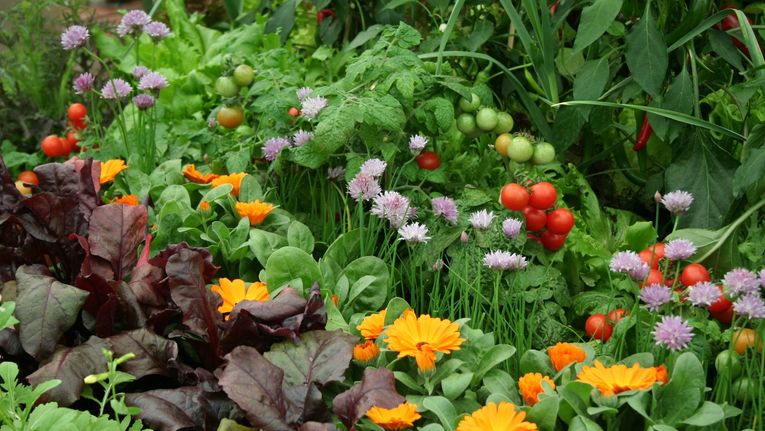
Limit the Use of Chemicals Whenever Possible.
Weeds and unwanted critters can put quite the damper on an otherwise beautiful and flourishing garden. Once considered the technological answer for dealing with insects, weeds, and other intruders, pesticides often favor convenience over soil and garden sustainability. Instead of relying on herb- and insecticides to keep your garden free to unwelcome visitors, try instead a variety of alternatives such as companion planting or “soft pesticides” such as insecticidal soaps.
Utilizing companion planting entails strategically placing plants known to repel certain types of pests in your garden. Allium species, such as onions, chives, garlic, leeks, and shallots, for example are great to plant around vegetables and roses and will repel aphids, slugs, carrot flies, cabbage worms, and more. Similarly, Petunias will repel tomato hornworms, leafhoppers, and squash bugs, while lavender repels moths, caterpillars, fleas, flies, and mosquitoes!
Insecticidal soaps provide a safer, effective, and low toxicity alternative to more toxic pesticides. They are inexpensive to use, leave no harsh residue, are natural products that are virtually non-toxic to animals and birds, and can be used on vegetables up to harvest. In addition, most beneficial insects are not harmed by soap sprays. Whatever you choose to use be sure that you are factoring in the potential effect to pollinators including best time of the day for application. Of course, a gardener can also always physically remove any insects he or she sees visiting a plant. Physically brushing away caterpillar nets or washing pests off plants with a stream of water may be just the thing you’re looking for!
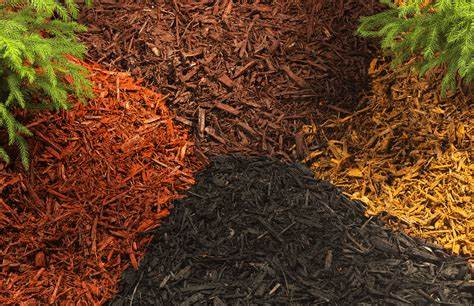
Mulching, mulching, mulching.
Mulching helps significantly reduce the amount of water required for your garden and helps rejuvenate soil, acting as a blanket over the soil surface and around the base of your plants.
Applying organic mulch increases the organic matter in the soil. Microorganisms that are naturally present in the soil degrade the mulch depositing decomposed organic material at the plants’ roots. This organic material provides necessary nutrients and holds moisture in the soil for the plants. Access to these nutrients and moisture is visible above ground in the healthy growth and appearance of the plant. From compost, leaves, straw, wood chips, newspaper, and more, there are so many great methods of organic mulch you can incorporate into your garden.
When choosing mulch look for natural options and steer clear of the artificially dyed options. Also, if you have the area for staging material, consider ordering mulch by the truckload from your local ground cover store. Procuring material in this fashion will help eliminate the large amounts of plastic waste generated from buying individual bags from your local home improvement store. Often times, the material will be better quality and potentially less expensive depending on the volume of your order and the charges for delivery.
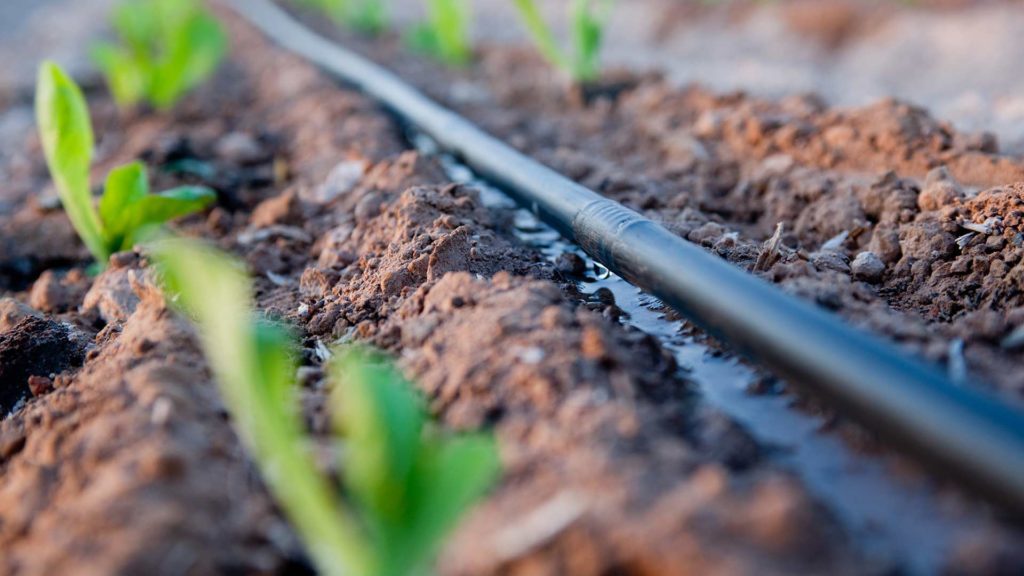
Utilize Sustainable Irrigation.
Similar to mulching, drip irrigation will also cut down on the amount of water a gardener has to put onto their garden. Drip Irrigation is the slow application of water directly to a plant’s root zone. It is intended to disperse water slowly and evenly, and to conserve water.
There are multiple methods of drip irrigation, such as soaker hoses, emitter systems, drip tape, and micro-misting systems. As opposed to can watering or watering via a sprinkler system, drip irrigation is a much more targeted irrigation method, dispersing water slowly and evenly, conserving a precious resource, eliminating run off, and watering your garden evenly and efficiently. It’s an excellent way to cut down on water waste and to save money on your water bills.
Installing a drip irrigation system is easier than you might think. You do not need to have a professionally installed irrigation controller and dedicated waterline to do so. You can run such a system with an adapter from a typical residential hose bib to get started. Such a system is scalable over time so you can start small and expand. There are numerous resource on line to help you get started. Pro tip: Include a digital timer at the hose bib connection to ensure that your watering schedule is maintained. There are many options out there for this including some that will allow for having multiple zones for covering more areas or areas with different demands.
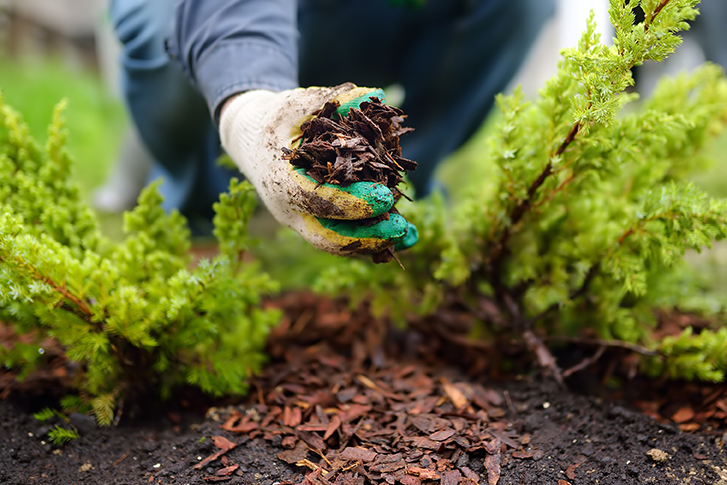
Keep Your Leaves on Site!
It’s typical for community members to bag their fallen leaves in the fall and putting them out onto the curb to be removed from their gardens; however, exporting leaves from your landscape causes significant energy loss in your system. The trees in our backyards utilize a lot of energy to grow their beautiful canopies every season. In the fall, those leaves are discharged onto the grown where they break down and reenter the system through the soil. When removing leaves from your gardens and home landscapes, the energy utilized in growing and discharging those leaves is lost along with them.
Instead of removing your leaves (and that vital energy) from your system this year, try to find a way to keep your fallen leaves on site. Mulching your leaves, for example, ensures a new replenishment of soil for next year’s season in a natural, normal cycle. A typical leaf pile may take two seasons or more to completely break down. There are ways to expedite this process by shredding the leaves. This can be done with a leaf shredder, weed eater or if you have them, chickens are great at this task. You can also look into composting the leaves over the summer season by mixing with grass clippings. There ae many resources online to better explain the needed ratios of martial and techniques to be successful. Creating mulch and compost from leaves makes for a sustainable system in your home garden in addition to helping eliminate several waste streams from your system.
